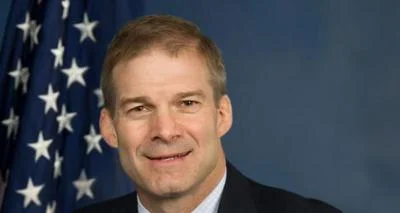The Congressional Record is a unique source of public documentation. It started in 1873, documenting nearly all the major and minor policies being discussed and debated.
“INTRODUCTION OF THE ``METROPOLITAN CONGESTION RELIEF ACT''” mentioning the U.S. Dept. of Transportation was published in the Extensions of Remarks section on pages E2438-E2439 on Nov. 23, 2003.
The publication is reproduced in full below:
INTRODUCTION OF THE ``METROPOLITAN CONGESTION RELIEF ACT''
______
HON. EDDIE BERNICE JOHNSON
of texas
in the house of representatives
Friday, November 21, 2003
Ms. EDDIE BERNICE JOHNSON of Texas. Mr. Speaker, I am pleased to introduce legislation that strengthens our commitments to the public and their local decision-makers in both urbanized and rural areas of this nation.
The ``Metropolitan Congestion Relief Act'' proposes a number of simple adjustments to the TEA-21 law, which as you know is now under discussion in the House Transportation Infrastructure Committee. Two days ago, the leaders of the Committee introduced legislation setting forth a six-year reauthorization plan for TEA-21, legislation that I am proud to cosponsor.
My legislation compliments the Committee legislation and proposes key adjustments to current congestion-related programs. This legislation would ensure that our national policy more fully engages and supports local elected leaders and the communities they represent. We need to engage the public and local decision-makers to address the nation's many transportation challenges.
The proposals in this legislation include two initiatives that follow the basic thrust of the Committee's TEA-21 renewal package.
First, this legislation invests more in our local decision-makers, those who now lead our nation's very important metropolitan economies and those in non-urbanized areas. Secondly, it further strengthens the partnership set forth in the 1991 ISTEA law that began devolving resources and decision-making to the nation's larger metropolitan areas. Finally, this legislation continues to place more responsibility where it belongs, with local community leaders and metropolitan planning organizations. These are the entities most challenged by pressing transportation needs, be it traffic congestion, air quality degradation or the rising demands of global competition.
These selected reforms and adjustments will yield results for all areas of our states. In those provisions targeted to metropolitan areas, all taxpayers and areas will benefit as these additional commitments will improve the performance of our existing assets and help us use available transportation dollars more efficiently.
Mr. Speaker, let me talk for a minute about the key features of this legislation and what it does and does not do.
First, it does not affect the allocation of resources from any of TEA-21's formula highway programs to the states, which is to say that it is policy neutral on the donor/donee issue. For the record, I am one member who has an interest in seeing more equity among the states, and this legislation does not disrupt any of these important efforts.
Second, the law this legislation amends is the Transportation Equity Act for the 21st Century. As we make progress on equity among the states, we should also make some greater strides in providing some modest assurances of equity to local areas and local taxpayers within our states. Here in this chamber and in the Transportation Committee we talk often about ``fair share'' among the states, and yet there is nothing in current law that addresses how equity is assured at the sub-
state level.
Let me illustrate this point further from the perspective of my district and the Dallas-Fort Worth region. As each new fiscal year arrived under TEA-21, local decision-makers in my region were certain that they would determine the fate of about 2\1/2\ cents of every highway formula dollar coming to the State of Texas. This is an inadequate commitment to a region that accounts for nearly one out of every five Texans and, in recent years, more than one out of every three new jobs in the State. By the donor/donee yardstick, this amounts to my local decision-makers having the certainty and direct control over about 10-12 cents on every federal highway dollar that is generated from local taxpayers and returned to the state. This is simply inequitable and can no longer be justified.
My legislation proposes to deliver more certainty to all areas of the state, both large and small, helping make some modest gains in ensuring more funding equity for the public in their local areas.
The legislation directs that Surface Transportation Funds provided to each of the states, either through the STP or indirectly through the unprogrammed share of the Minimum Guarantee program, be directed to local areas, following existing law using the fair share distribution to urbanized and non-
urbanized areas. All areas within the states will have more funding certainty as a result.
Third, the Metropolitan Congestion Relief Act enhances our federal surface transportation policies by enlisting local decision-makers and their substantial transportation assets under their control more fully into the TEA-21 partnership.
In addition to directing more STP and Minimum Guarantee resources to metropolitan planning organizations and other local areas under ongoing state-directed programs, the legislation specifically directs states to work more directly with local decision-makers, particularly in the larger urban areas, in deciding on investments in the National Highway System. This is a critical asset for all of us and one where local governments either own a share of these facilities or where locally-
owned facilities are substantially affected by NHS facility investments.
Let me provide some additional background on this and related points. One of the weaknesses of the current Federal policy is that it relies too heavily on overburdened State transportation agencies. Overall, States own the smallest share of the Nation's transportation facilities relative to local governments and yet are given direct control over an overwhelming share of Federal transportation dollars. On average, for each highway dollar that a State receives, only six percent is guaranteed to reach local decision-makers, those in metropolitan areas of 200,000 or more where more than one out of every two Americans live.
Let me explain further. Presently, local governments--cities, towns and counties--directly or indirectly through regional agencies own and/
or operate more than three-quarters of the Nation's roads and streets, about one-half of the Nation's bridges, more than ninety percent of all transit systems and about the same share of the Nation's airports, most of the train stations, port facilities, traffic signals, public parking structures, sidewalks and trails, and so on. Let us not forget that 63 percent of urban area highways in the Federal Aid System, which includes those facilities generally eligible under Federal TEA-21 programs, are owned by local governments. Yet, existing policy directs virtually all of the resources to State highway and transportation departments.
In aviation, Congress rightly directs resources to the agencies, be it the State, region or local government who own and operate airports. In transit, Congress rightly directs resources to the level of government who delivers these services. In flood control, the State, region, or local agency responsible for the improvements receives the funding. And so on.
As this Congress seeks to address the burdens of congestion the need for smarter and more balanced transportation investments to give taxpayers more for their dollars, we must recognize that we have reached the point where it is impossible to achieve these outcomes without more fully involving our local transportation partners. This means bringing local elected officials--mayors, city council members, county executives and commissions, and others--more fully into this partnership. This legislation makes some modest adjustments and empowers these critical officials in the transportation partnership.
Finally, this legislation specifically addresses the needs of local areas with the most air quality and congestion problems. It does so by directing States to allocate Congestion Mitigation and Air Quality Improvement program (CMAQ funds to local areas that are in non-
attainment or maintenance of applicable national ambient air quality standards. Specifically, it requires States to pass these funds to local areas on a fair share basis where metropolitan planning organizations are in place. Simply put, States earn CMAQ funds based on local air problems and the legislation makes sure that funds are passed through to these areas. Recently, this chamber debated the extension of the compliance deadlines in some Texas cities and other places, all the while my own State of Texas had piled up more than $270 million in unspent CMAQ funds that could have helped improve air quality in my area and others in the State. This provision will make sure that the local areas that carry these-requirements under Federal law are certain to receive their fair share of the resources that are provided.
There are also two new initiatives in the legislation that address congestion. One is a new $2 billion annual formula program aimed at the Nation's most congested metropolitan markets, as analyzed by the Texas Transportation Institute. This program will target resources to areas of the Nation with clear congestion needs. The other program will provide modest resources of $500 million annually to local governments to support incident management programs.
Let me speak to the need for these targeted programs. Every taxpayer and every community in our States benefits if we make some selected investments that improve the performance of our Nation's most productive economic centers. All of our economic data shows that our metropolitan areas are truly the economic engines of our State economies and help drive overall U.S. economic growth. They now account for the overwhelming and disproportionate share of the Nation's new jobs, personal income and total economic output. This legislation speaks directly to the pressing needs of these city and county metropolitan areas by investing immediately in congestion relief strategies and programs that will pay substantial dividends to the economic bottom lines of our State and the Federal Government. These initiatives, coupled with other provisions in this legislation, will help us extract more economic output from these areas.
This investment in our regional economic engines will also position our Nation more favorably in the global competition of world trade. For instance, consider my own district, the Dallas Metro area, not including the adjoining Fort Worth Metro area. The Dallas Metro area produced more goods and services--about $170 billion in 2001--than 29 States. This output exceeded that of many countries, such as Denmark or Hong Kong. This legislation is about recognizing the importance of the role local decision-makers play in steering these vital economic units and the value of tapping the vast range of our Nation's broadest asset base. In the end, our Federal policy needs to go beyond the Federal/
State partnership of the 1950s that was built around the Interstate era. The 1991 ISTEA made some strides to update our institutional arrangements, and this legislation builds on those improvements.
Mr. Speaker, this legislation is nonpartisan. It represents an effort to establish a fair and equitable distribution of our Federal transportation dollars.
____________________








